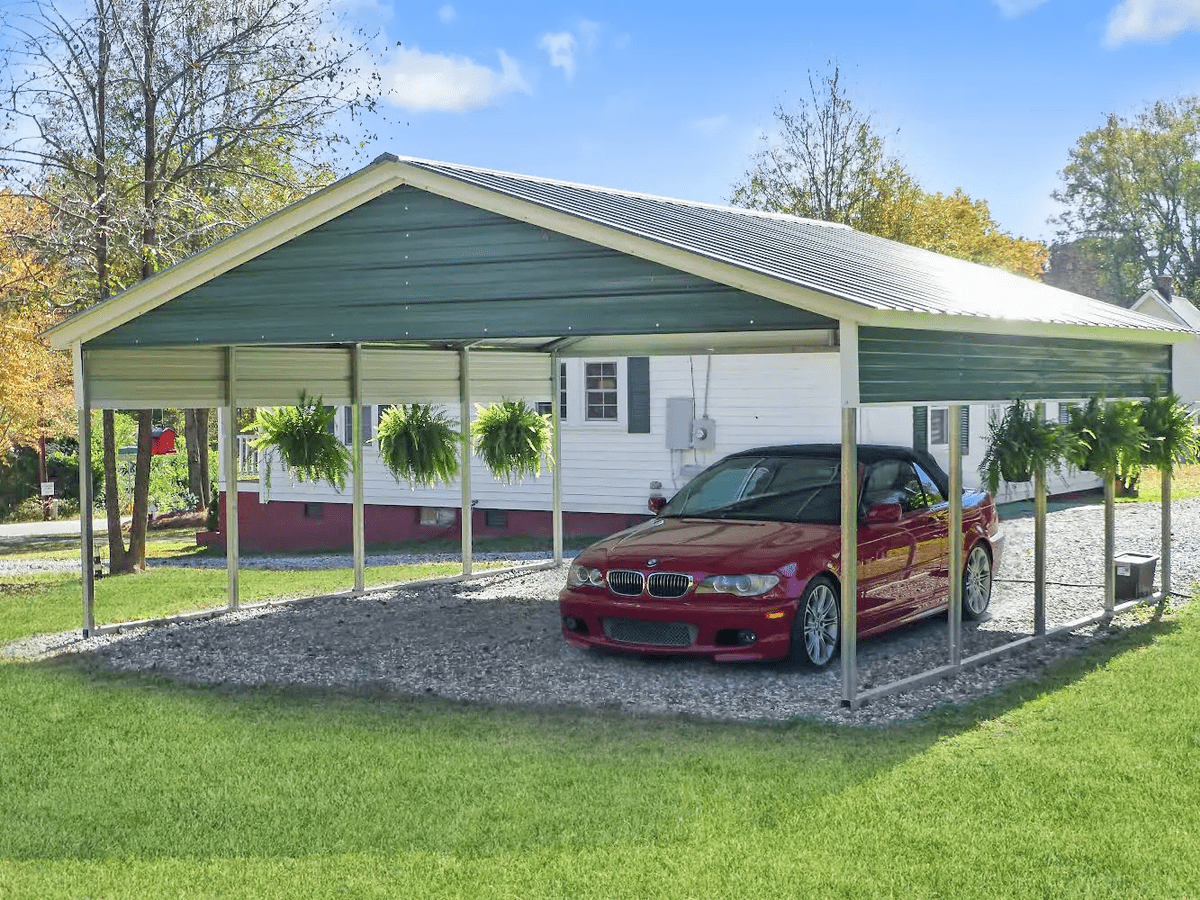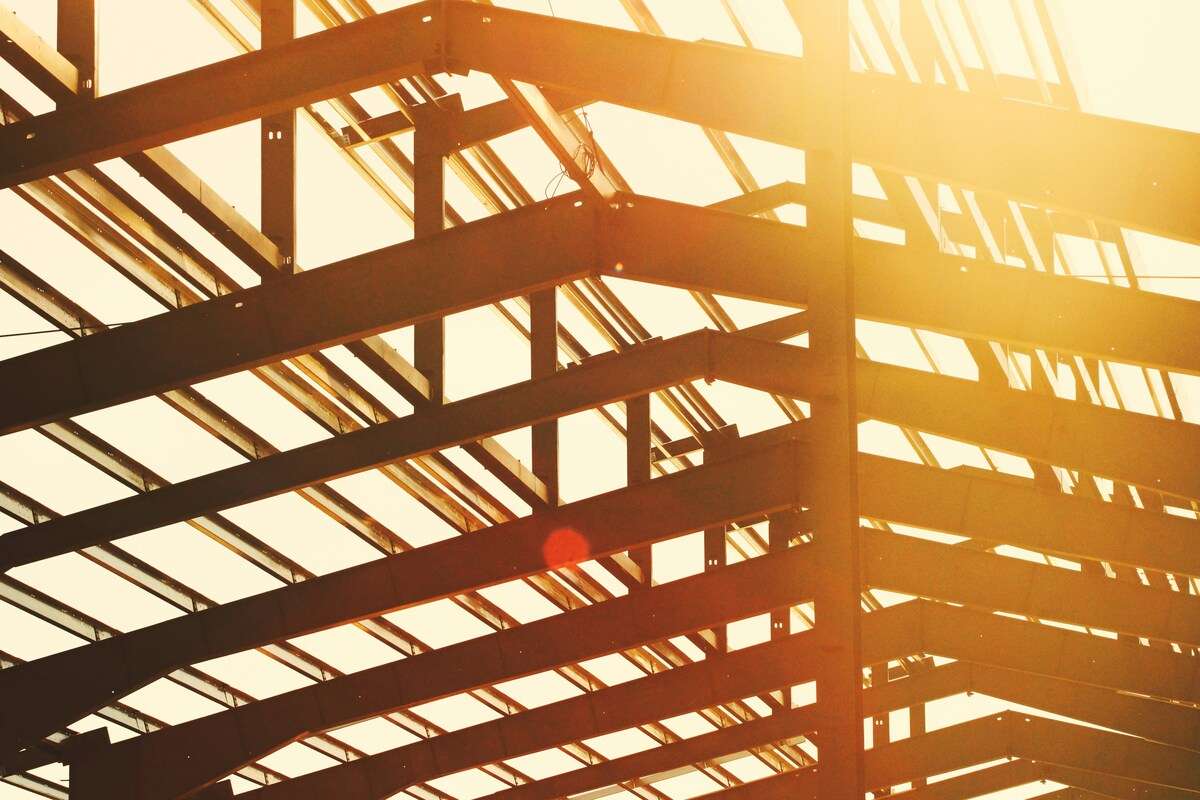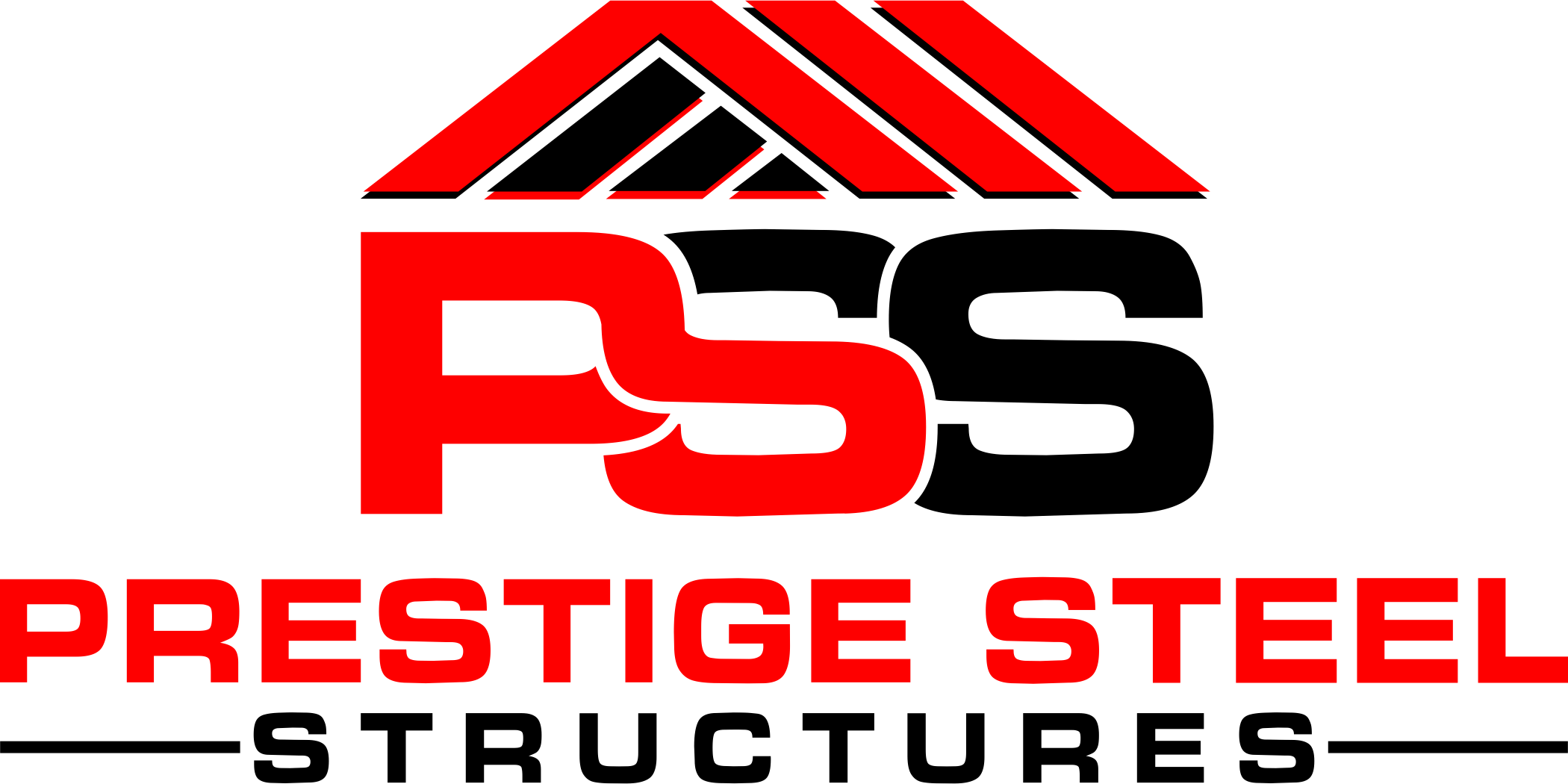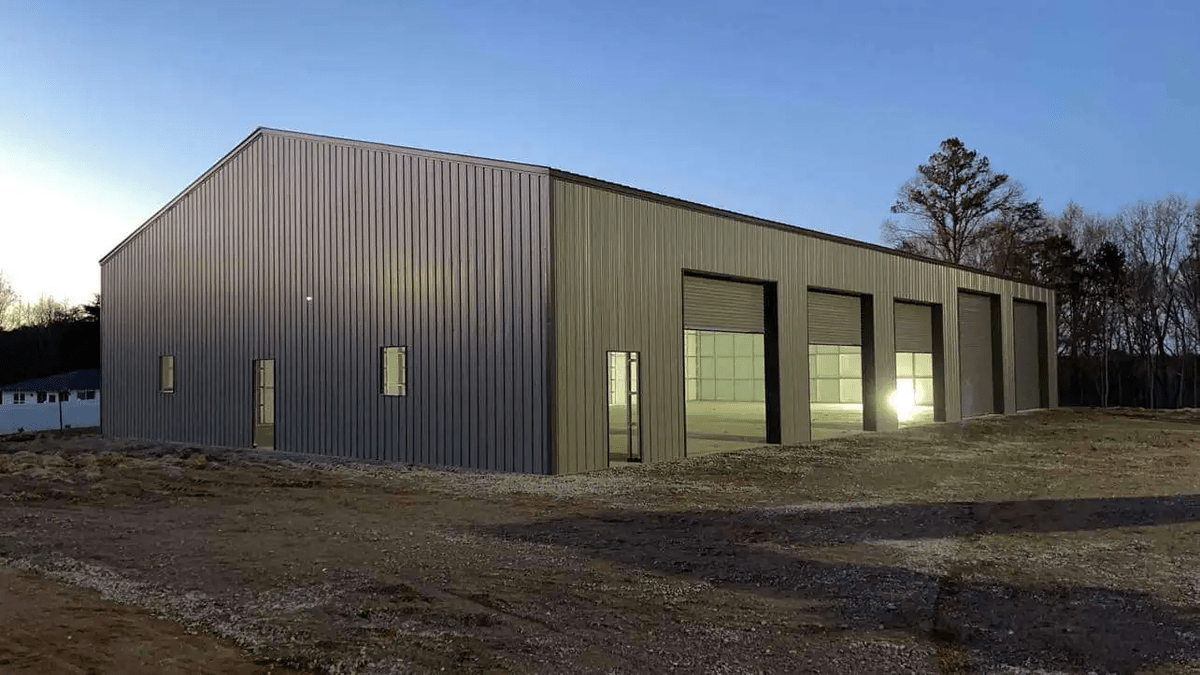Ensuring your metal building or carport is properly anchored is a critical step in protecting it from harsh weather and environmental conditions. The right anchors provide the stability needed to prevent your structure from shifting or toppling during strong winds or storms. In this guide, we’ll explore the various types of anchors available for different foundation types, such as concrete, asphalt, and bare ground. Understanding these options is key to securing your metal building for long-lasting durability and peace of mind.

Understanding Anchors
When installing a metal building, one of the most critical factors to consider is ensuring the structure is securely anchored to the ground. Proper anchoring is vital to keep the metal building stable, safeguarding it against strong winds, severe storms, or other extreme weather events that could otherwise cause it to topple or shift.
Anchors play a crucial role in securing custom metal buildings, helping them remain grounded regardless of weather conditions. These anchors, typically rods or bolts, are either cast or set within the foundation to permanently fasten the metal structure in place. Crafted from high-strength steel, these essential components come in varying diameters, shapes, and lengths, ensuring durability and preventing any movement of the building over time.
The choice of anchor depends largely on the surface where the carport or custom metal building will be installed. Whether you’re anchoring into concrete, soil, or asphalt, it’s important to select the right anchor and install it correctly. This involves driving the anchor into the ground at the appropriate depth and angle to ensure maximum stability. If you’re uncertain about the installation process, it’s highly recommended to hire a professional contractor to handle the task. Properly installed anchors are key to ensuring that your metal building can withstand even the harshest weather conditions.
At Prestige Steel Structures, we specialize in installing structures that are securely and permanently anchored, ensuring your metal building stands strong for decades.
Read on to discover more about the various types of anchors suited for different foundation types and how they can contribute to the longevity of your metal building.

Different Types of Anchors and Their Applications
The type of anchor and how it is placed will vary based on the foundation and the specific metal building being installed. For instance, a 12×20 steel carport set on an asphalt slab will need a distinct anchoring strategy compared to a larger 40×60 commercial metal building that sits on a concrete foundation. As a result, it is crucial to be knowledgeable about the various types of anchors and the most appropriate foundation options to ensure a secure and long-lasting metal building installation. Having the right anchors not only guarantees stability but also maximizes the lifespan of the structure.
Rebar Anchors
Rebar anchors, typically measuring 1/2″x32″, are essential tools for securing metal buildings directly to solid ground, ensuring the structural stability of construction projects. These anchors are fixed to the base rail of the metal structure during installation and then driven into the ground, providing a strong foundation for your building. By utilizing rebar anchors, you can be confident that your metal building is firmly secured, giving you the assurance that your investment is safeguarded against potential instability.
However, it’s important to note that rebar anchors are not suitable for softer soil types or regions prone to extreme wind conditions, as they may not provide sufficient stability in such environments.
Auger Anchors
When planning to install a metal carport or any metal building on an uncovered surface, auger anchors are an ideal solution. These anchors are specifically designed to be driven into dirt or soil, offering a firm grip that keeps your metal structure securely in place. Even on soft or loose soil, auger anchors excel at maintaining stability, ensuring your metal building stands strong. They are highly recommended for areas prone to heavy winds, as they provide the necessary support to withstand harsh conditions. Additionally, auger anchors are the go-to choice when it comes to certifying metal buildings, offering an extra layer of protection against movement during windy weather. With their proven effectiveness, auger anchors ensure that your structure remains safe and steadfast, even in challenging environments.
Asphalt Anchors
Asphalt anchors are frequently utilized when installing metal buildings on asphalt slabs. Asphalt foundations are composed of materials like stone, gravel, and sand, which are prone to cracking under pressure, making them unsuitable for use with concrete, mobile, or rebar anchors. These anchors have a screw-like, threaded design and are specifically engineered for asphalt surfaces to prevent excessive stress on the foundation. When installed properly without causing cracks, asphalt anchors can withstand areas with extreme wind conditions, similar to concrete anchors. However, they are not recommended for use in concrete or soil foundations due to their design limitations. This makes it essential to evaluate the foundation type carefully before choosing the right anchor for metal buildings.
Concrete Anchors
When installing a custom metal building or carport on a concrete slab, concrete anchors are the best option to ensure a secure fit. These types of anchors are known for their exceptional strength, particularly in regions prone to high winds and severe weather conditions. The process involves drilling concrete expansion anchors through the base rail of the metal structure and deep into the concrete slab, securing them with bolts and screws to firmly fasten the building. The thickness of the concrete foundation directly determines the appropriate size of the anchor needed for the installation. Utilizing the right size anchor is crucial to maintaining the structural integrity of the metal building, especially in harsh climates.

Helpful Tips for Anchoring Your Metal Buildings Effectively
If you’re a DIY enthusiast planning to install a metal building like a garage, barn, or carport, anchoring your structure securely is crucial for its stability and safety. To ensure a strong foundation, here are some essential tips to keep in mind when placing anchors for your metal buildings:
- Consult Local Building Authorities: Always check with your local building department for specific codes, permits, and regulations before you begin any installation process for your metal buildings. This step ensures compliance with legal requirements and avoids future complications.
- Choose the Right Anchors: It’s vital to select the appropriate type of anchor for your specific foundation type, and equally important to make sure that the foundation is level and properly set before starting your installation.
- Secure Anchors Properly: When drilling the anchors, ensure that they are driven safely into the base rail of the metal building and into the foundation for a secure hold that guarantees structural stability.
- Prioritize Safety: Always wear gloves and take other necessary safety precautions when handling heavy materials or performing the installation. This helps reduce the risk of injuries and ensures a smoother construction process.
- Hire Professional Help If Needed: If you decide to hire a professional for assistance, obtain permission from the building department beforehand. Make sure the professional is informed about the zoning code and understands the specific foundation type to avoid any complications.
- Avoid Alternatives to Anchors: Do not rely on alternatives like girts or purlins to secure your metal buildings to the foundation. Anchors are the recommended method to guarantee better stability and long-lasting durability for your structure.
By following these tips, you can ensure that your metal building is anchored securely and complies with local codes, helping to safeguard the longevity of your structure.
Conclusion
Securing your metal building or carport with the right anchors is essential for long-lasting durability and safety. Whether you’re anchoring on concrete, asphalt, or bare ground, choosing the proper anchors ensures your structure remains stable, even in extreme weather conditions. Rebar, auger, asphalt, and concrete anchors each offer specific benefits depending on your foundation type, and installing them correctly is key to safeguarding your investment. For DIY enthusiasts or those unsure about the process, professional help is always recommended to guarantee the best results. Proper anchoring not only protects your structure but also ensures peace of mind for years to come.
FAQs
What type of anchors should I use for a metal building on concrete?
Concrete anchors are the best option for metal buildings installed on a concrete foundation. These anchors provide exceptional strength and stability, especially in areas with high winds or severe weather.
Can I install a metal carport on asphalt?
Yes, you can install a metal carport on asphalt using asphalt anchors. These specially designed anchors are threaded and built to withstand the pressure from asphalt surfaces, offering solid support without cracking the foundation.
How deep should I install rebar anchors for metal buildings on bare ground?
Rebar anchors should be driven deep enough to securely fasten the building to the ground, typically around 32 inches. However, they are not suitable for soft soil or windy regions, so consider alternative anchors if needed.
What is the best anchor option for loose soil?
Auger anchors are ideal for metal buildings installed on loose or soft soil. Their design allows them to grip the ground firmly, providing stability, even in areas prone to heavy winds.
Do I need professional help to anchor my metal building?
While it’s possible to install anchors yourself, hiring a professional ensures correct installation, especially for large structures or complicated foundation types. Proper anchoring is critical to avoid issues with shifting or damage during extreme weather.


